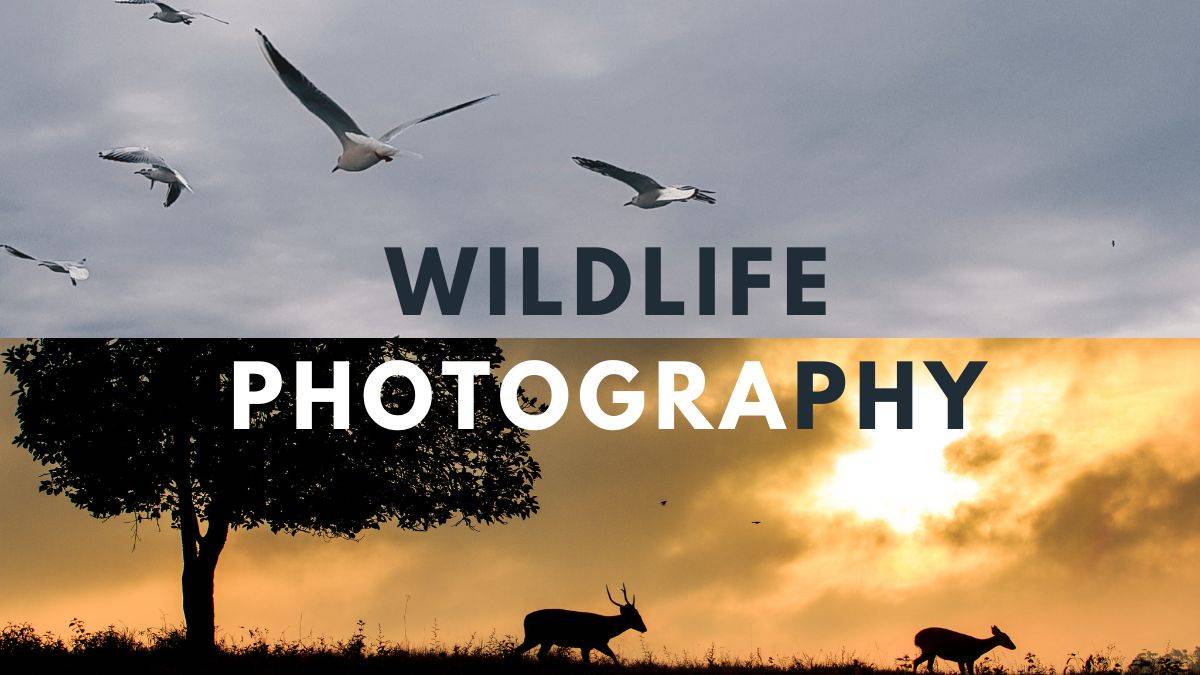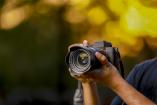Career in Wildlife Photography
If you love animals and don't mind getting lost in the woods exploring the wilderness of nature, Wildlife Photography is the dream career for you. You can charm the world with your pictures. It's an adventurous career that demands both mental and physical fitness, in addition to the general aptitude for the job. Read the article below to learn about a career in Wildlife Photography.
- Wildlife Photography Course: Highlights
- How to Become a Wildlife Photographer
- Is Wildlife Photography the Right Career for You?
- Salary of a Wildlife Photographer
- Conclusion
Wildlife Photography Course: Highlights
| Particulars |
Details |
| Name of degree |
|
| Degree level |
Undergraduate/Postgraduate/Certificate/Diploma |
| Course Duration |
6 months/1 year/2 years/3 years |
| Entrance Exam |
|
| Top Colleges |
Amity School of Communications, National Institute of Photography, NIFT Delhi, Nagpur University |
| Annual course fee |
INR 2 to 5 lakh |
| Top Wildlife Photography Courses |
|
| Top Recruiters |
National Geographic, Discovery, Architectural Digest, UTV Motion Pictures, ESPN Sports, Star Sports |
| Specialisations |
Wildlife Photography, Nature Photography, Wedding Photography, Sports Photography, Journalism |
How to Become a Wildlife Photographer
Wildlife photography can be an exciting and rewarding career path for those who have a deep love for nature, animals, and the outdoors. The majority of people take up photography as a hobby; turning it into a professional way, especially when it comes to wildlife, requires training, patience, and field experience.
Here is a step-by-step guide to help you start your journey as a wildlife photographer:
1. Laying the Groundwork with Photography
First things first, it is vital that you start slow before indulging in wildlife photography; first learn the basics, including:
- Working with a DSLR or mirrorless camera
- Understanding Light, Exposure, Shutter Speed and ISO
- Different techniques involve framing, composition, and focusing.
- Handling lenses and tripods
Tip for Beginners: Enrol in a Photography or Visual Arts course from a reputed college or institution. Many fine arts colleges, design schools, and media institutes offer diploma or certificate courses in photography.
2. Start Practising with Easy Subjects
Don't rush into the wilderness right away. It is always a good idea to brush up on your technical control and start small. You can:
- Click pictures of birds, pets, or insects in your surroundings
- Capture animals in local parks or zoos
- Experiment with different angles, motion, and lighting
3. Assist a Wildlife Photographer
You can join a professional wildlife photographer and learn the technical intricacies from their experience. You can also:
- Pursue internships or assistantships with professional wildlife photographers
- See how they organise shoots, get close to animals, and manage equipment
- Get practical experience with actual field problems and learn functional safety guidelines
4. Choose the Right Environment
You don't always have to start with forests or safaris.
- Start with locally available nature spots: hills, wetlands, lakes, or even your rooftop
- Watch for migrating birds, butterflies, or squirrels -- anything that allows you to witness behavior and movement
- Over time, you can make visits to national parks and wildlife sanctuaries.
5. Start with Safe and Common Species
Do not start chasing dangerous animals. You should-
- Begin with Safe and Common Subjects
- First of all, do not pursue dangerous animals
- Click safer wildlife such as deer, monkeys, or birds
- Understand animal behaviour and timing without risking your or anyone's safety
With experience, you can venture into more challenging subjects.
6. Plan Before Every Shoot
As much as timing, wildlife photography is about planning.
- Observe your subject: what it eats, when it's most active, how it travels
- Learn about the location: terrain, weather, access, and local regulations
- Bring necessary equipment: the appropriate lens, tripod, batteries, memory cards, weather gear, etc.
7. Be Patient and Persistent
Unpredictability is the biggest challenge in wildlife photography. Keep in mind that
- Animals won't pose for you. They might get scared.
- You might have to wait for long periods to capture that perfect shot
- Learn to enjoy the process, not just the outcome
8. Learn Editing and Post-Processing
Editing is a crucial part of photography:
- Improve your photos with editing software to adjust brightness, contrast, and colour balance.
- Don't disrupt the natural appearance of the subject; don't over-edit
- Take brief online lessons on Lightroom or Adobe Photoshop. You can also try a phone editing software.
9. Build a Portfolio and Find Platforms to Share Your Work
After you create a collection of strong and appealing images:
- Create a portfolio that reflects your work in the best and the most professional way
- Share your work on social media platforms like Instagram or 500px
- Share your clicked pictures with wildlife magazines, stock photo websites, or exhibitions
10. Consider Advanced Learning and Certifications
To ensure you are on the right track and are enhancing your skills periodically, you must -
- Take advanced photography or specialised wildlife certification courses
- Attend workshops, nature photography festivals, and field trips hosted by photography communities
- Network with editors, conservationists, and wildlife tour organisers
Is Wildlife Photography the Right Career for You?
You might love being a wildlife photographer if:
- You love being in nature.
- You have always been curious about wild animals and how they live.
- You don’t mind getting a little dirty and capturing rare moments.
- You can sit quietly for hours waiting for that one perfect shot.
If any of that sounds like you, this might be your calling.
What Does the Job Really Look Like?
- Freedom with your camera, you choose what to shoot, and how to frame it.
- Always an adventure, one day you find yourself in a forest, the next you are in the mountains far off.
- The best wildlife action often occurs at dawn, dusk, or even in the middle of the night. Be prepared for that.
- Not just pretty pictures: It takes patience, planning, and knowledge of animal behavior.
What You Need (Besides a Camera) for Wildlife Photography!
To thrive in this highly demanding domain, you will need more than just photography skills. Let’s talk about that -
- Strong body and mind: Hiking, climbing, and waiting for extended periods in harsh weather conditions are involved.
- Bravery and curiosity: You may find yourself near wild animals that can be dangerous.
- A sense of self-reliance: You could be working in remote locations, probably alone, so you should be able to thrive independently.
- Passion: Are you passionate enough to carry on even when the work gets tough? If yes, then we suggest you take wildlife photography courses and turn your passion into a profession.
Things No One Tells You About Wildlife Photography
Like any career, wildlife photography has its challenges:
- You will travel a lot: Sounds fantastic, but it also means missing the comfort of your home after long working hours.
- It's physically demanding: You will need to hike, carry heavy gear, and survive in rough weather and terrain.
- Safety isn’t guaranteed: You will be in wild spaces, sometimes near dangerous animals.
- No fixed routine: Work hours are unpredictable, and income can be irregular, especially in the beginning.
Salary of a Wildlife Photographer
Besides the regular options, enthusiasts can also design their calendars and cards. A photographer as a fresher can get INR 5,000- 10,000 per month. An established and renowned photographer can earn from INR 30,000 to 5 Lakh per month.
Conclusion
However exciting, but you need to think through everything in detail before embarking on your journey as a wildlife photographer. All the glamour and social media-based craze of wildlife photography should not distract you. You need to understand that making a career in wildlife photography is not an overnight process. You must finish your formal education, get a career that will give you your daily bread, and then think about entering wildlife photography as a serious career. In the case of wildlife photography, your photos need to stand out amidst millions of photographs. Do not be discouraged by failures, keep training and learning in order to achieve your goals. Nor compare yourself to others; it is important that you follow your photographic vision- uniquely!

Comments
(18)
T
2014-08-09 12:31:47
s
2015-01-30 20:14:26
2014-08-11 18:08:48
2014-03-31 01:19:34
2014-07-16 11:41:01
A
2014-07-15 15:17:09
2014-03-28 09:48:49
2014-03-21 09:47:42





Name: Rashmi Karan
Education: M.Sc. Biotechnology
Expertise: IT & Software Entrance Exams
Rashmi Karan is a Postgraduate in Biotechnology with over 15 years of experience in content writing and editing. She speciali
Read Full Bio